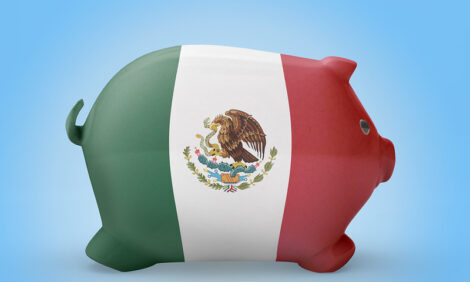



Austria Pork Industry Overview, September 2004
By USDA Foreign Agricultural Service - This article provides the pork industry data from the USDA FAS Livestock and Products Annual 2004 report for Austria. A link to the full report is also provided. The full report include all the tabular data which we have omitted from this article.Report Highlights
In 2003, Austria's opening swine stock was 1 percent above the previous year. Slaughter hogs totaled 5,310 thousand, a 1 percent increase. Due to the decoupling process of the EU CAP reform and the accession of 10 new EU member states in May 2004, Austria faces significant uncertainties in the livestock sector during the next couple of years. However, cautious forecasts do not foresee major changes in this sector.
Executive Summary
In 2003, Austria’s bull, steer, cow and heifer stock totaled 607,535 head, a 1.43 percent drop from 2002. The calf stock totaled 173,693 head, a 3.18 percent drop. Cattle slaughters totaled 684,951, a 3.2 percent drop. Total production of beef and veal amounted to 201,000 MT, and domestic consumption reached 155,000 MT. Swine production amounted to 4,833 thousand head, a 0.97 percent increase. Pig slaughters totaled 5,310 thousand, a 0.67 percent increase.
Animals for Production and Meat in Austria
Approximately 45 percent of Austrians agricultural output derives from livestock production
and animal products. In 2002, livestock production amounted to 26.9 percent (1,637
million Euro / US$ 1,716 million) of total agricultural output with animal products production
amounting to 18.6 percent (1,102 million Euro / US$ 1,155 million) of agricultural output at
basic prices (Figure 1).
Since the seventies, total meat production has steadily grown, whereas the value of animal
production at basic prices declined by 5.4 percent on average. Production of total meat in
2002 accounted for 896,138 MT, of which pork accounted for 54.9 percent, beef and veal
for 25.3 percent, poultry for 12.6 percent, sheep and goat meat for 0.9 percent, horsemeat
for 0.1 percent, offal for 5.4 percent and other meat for 0.8 percent (Figure 2).
Austrian’s per capita consumption of meat accounted for 65.5 kg (98.7 kg including bones) a
year. The degree of self-sufficiency for all kind of meat in total was 110% in 2002.
Due to the decoupling process of the EU CAP reform and the accession of 10 new EU member
states in May 2004, Austria (like all other EU countries) faces significant uncertainties in the
livestock sector during the next couple of years. However, cautious forecasts do not foresee
major changes in this sector.
Swine
Swine production is primarily carried out in the corn growing areas north of the eastern Alps
and in southeastern Austria. Large areas of the provinces of Upper Austria, Lower Austria
and Styria have ideal climatic conditions for corn production. Around 80 percent of hog
producers and 90 percent of hog production is in the aforementioned provinces. With 10.9
percent (2002) of the total agricultural output, hog production follows cattle (beef and milk)
as the most important agricultural sector.
Austria’s total swine stock in 2003 totaled 4,833 thousand hogs. This corresponds to an
increase of 46,210 hogs (plus 0.97 percent) compared to the previous year. Total slaughters
in 2003 rose by 35,514 hogs (or 0.67 percent) up to 5,310 thousand slaughters.
Imports of live swine in 2003 declined from 540,980 hogs in 2002 to 532,323 hogs in 2003
(minus 8,657 head or 1.60 percent). Almost all imports of live swine to Austria come from
Germany.
Major export countries of live swine are Croatia, Germany, Italy and Slovenia. Export
numbers in 2003 reached in total 57,654 hogs. This is an increase of 4,121 hogs (or 7.70
percent).
Prices for piglets declined by 16 percent from 2.02 Euro (US$ 2.12) per kg live weight in
2002 to 1.70 Euro (US$ 1.78) per kg live weight in 2003. Also the prices for breeding sows
declined by 15 percent from 256 Euro (US$ 268.3) per stock in 2002 to 215 Euro (US$
225.3) per stock in 2003.
To view the full report, please click here (PDF)
Source: USDA Foreign Agricultural Service - September 2004







